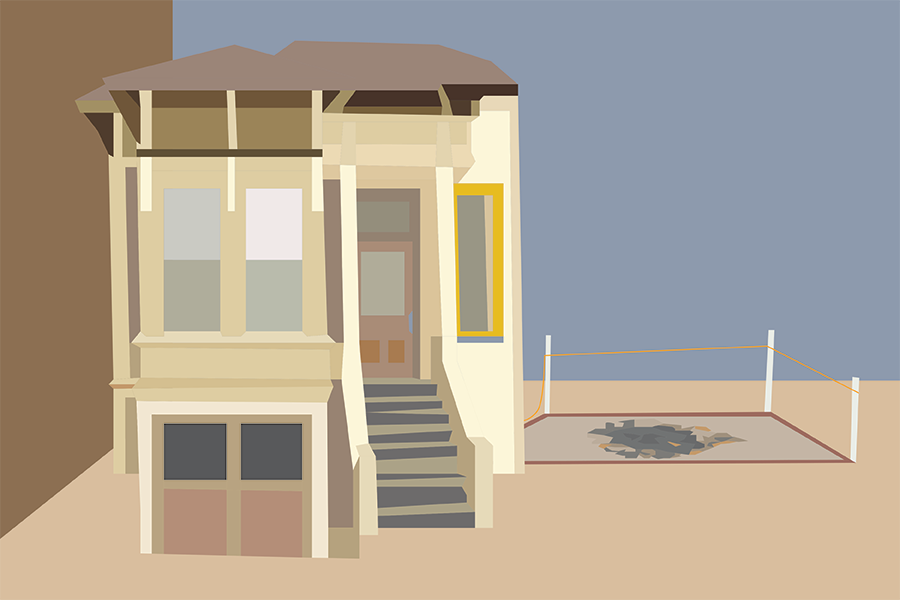
Home remodeling project in San Francisco leads to study of a mummified child
In a strange twist of events, a seemingly normal home remodeling project turned into an archaeological excavation led by archaeologist and UC Davis anthropology professor Jelmer Eerkens when the mummified daughter of an elite historical San Francisco family was uncovered. The California Aggie dug deeper to learn more about the findings.
The mummy, later identified as Edith Howard Cook, from the affluent Cook family, was exhumed almost 150 years post-mortem and offered UC Davis researchers and their teams a source of archaeological analysis.
Angela Evoy, an archaeometry lab technician, was especially excited about the news that a mummy had been found.
“I was very excited because it’s not something that you come across very often,” Evoy said. “And you know, you hear about mummies, you think of Egypt. So [to] find out that there was a mummy in San Francisco, it’s pretty amazing, it’s pretty phenomenal that it was preserved.”
The research team submitted the mummy’s hair samples for various lab analyses, including carbon, sulfur, nitrogen and hydrogen testing.
“Hair is nice because it grows over time,” Eerkens said. “We have about one year’s worth of hair growth […] Based on dental corruption patterns, we estimated [the girl] was about 2.5 years old — we had information about the girl that was preserved in her hair from about 1.5 to about 2.5 years before she died. Given new analytical techniques, we can use really small pieces of hair […] we cut it into small sections and we do analyses on each of those different sections. It gives us sort of a picture of what the girl was eating and where she was during the last year of her life.“
During analysis, the research team found that the nitrogen isotopes that would normally come from one’s diet started being sourced from her own body, indicating starvation. This led to the belief that the girl most likely died from malnourishment, possibly brought on by an infectious disease. However, the sulfur isotopes, normally used to indicate the presence of medicine in the body, showed no signs of any medication given to the child before she died.
The process of submitting the samples for analysis was the most tedious step in the process, as the team had to submit around 630 samples for analysis.
“There are always roadblocks when it comes to dealing with samples that are that tiny,” said Bryna Hull, an archaeology Ph.D. student and former archaeometry lab technician. “So even with the [hair], we occasionally had issues with static. Not only do we have to worry about getting it out of the vial, but sometimes when you go to remove it, it will start climbing around in the vial due to static electricity.”
With the process being so frustrating, it was no wonder that there was a large number of team members working on it.
“People are involved in it together,” Evoy said. “We got to do some really cool stuff here, but there’s a lot of other people who put in a lot of work to make it happen. It’s a huge project. The people in San Francisco who originally initiated this project and the people who are doing the DNA analysis […] and also the people at the stable isotope facility get left out of a lot because they’re sort of more in the background, but they run all of our samples for us through their inductively coupled plasma mass spectrometer (ICP-MS), which gives us their data. Without them, we wouldn’t have anything.”
The most unexpected result from the research was actually being able to find the child’s identity. Evoy said that it made her take a step back and think about the person behind the skeleton.
“It’s really exciting because sometimes when you’re working with archaeological collections, you can tend to forget that it’s a human being,” Evoy said. “You’re working with a person, somebody’s loved one, somebody really cared about this. You’re so hyper-focused on just getting your sample to cooperate or get some data [that when] they give you a name, and then you have a picture, and then you see family members, you realize that this is a person and that people actually care […] It sort of brings it all home and in this way, doing a sort of historical project, you get to find out a little bit more than you probably would within an archaeological collection that’s really old where there are no living descendants.”
Written by: Kriti Varghese — science@theaggie.org




